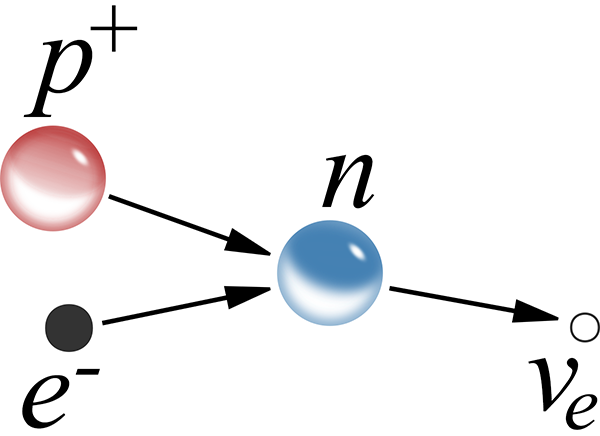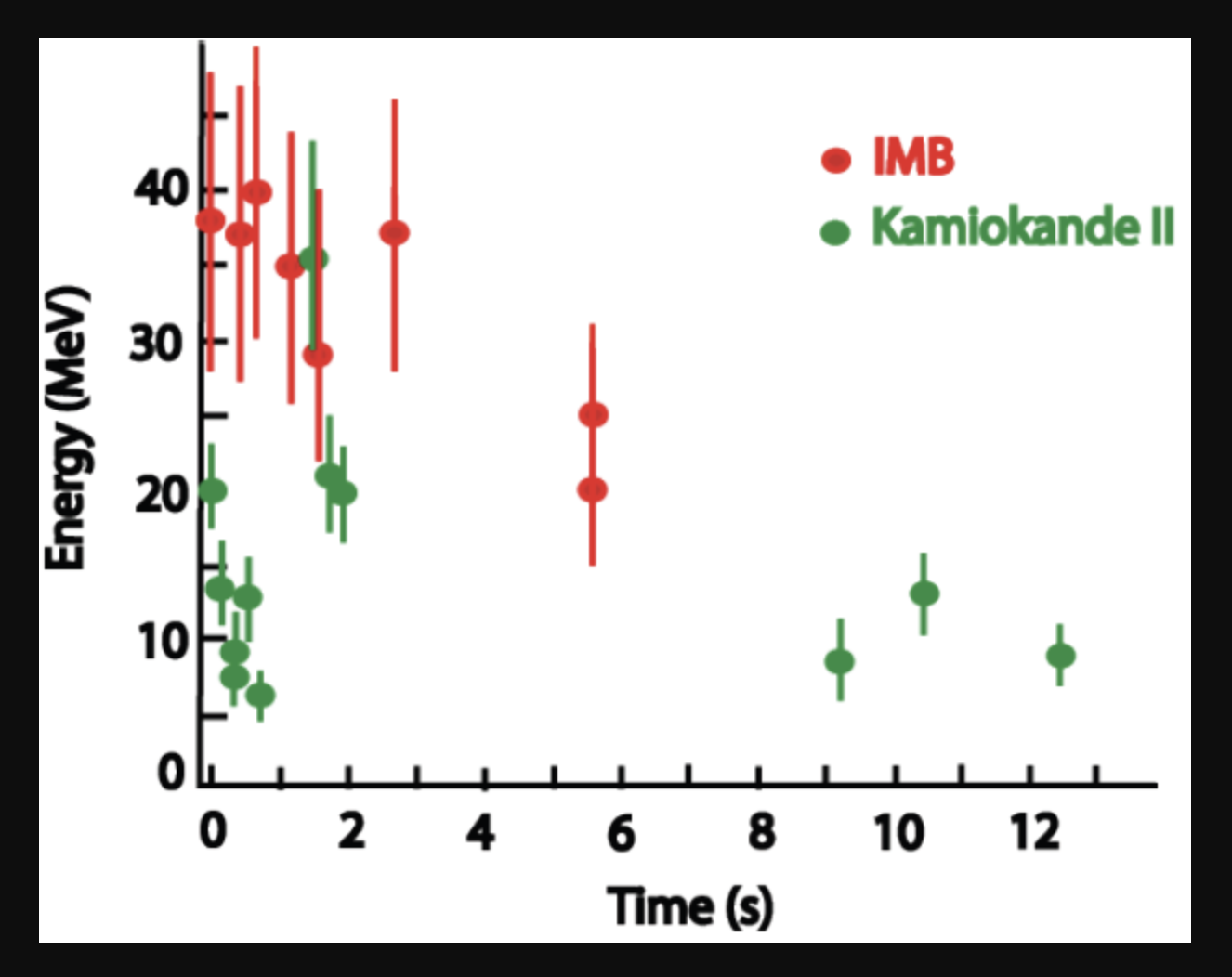Outburst Mechanism
A. The Set-up
The interior of SK -69 202 just before the outburst is
like that of a
red supergiant:
- The core of the star is around the mass of the Sun but is
the size of the Earth
and composed of iron.
- The core is surrounded by the shell
sources ignited after each phase of core burning ran to completion.
- The
outer envelope of the star is 90 % hydrogen and roughly 10 % helium (as is
the rest of the Universe).
- Because iron is the last element which
can be profitably used as fuel for the fusion process,
something catastrophic is poised to happen.
B. Instability
Look at the iron core.
It is made out of hot iron nuclei and degenerate electrons. It is
supported by degenerate electron pressure and
the hot iron nuclei.
- Due to energy losses from the star and the fact that the iron core
does not go nuclear fusion, it is inert,
the core slowly contracts increasing its
temperature and density
(as any star would after nuclear reactions in its core cease).
- When its temperature reaches around 5 billion Kelvin,
the core is so hot that the radiation
in the core starts to break apart the iron nuclei in a
process known as
photo-disintegration,
Fe + γ → 13 He + 4 n
It takes
a lot of energy to break apart an iron nucleus and this process steals a
energy from the core leading to a drop in the pressure of the core.
- At around the same time another interesting thing happens. The
electrons (-) can combine with the protons (+) to make neutrons (o)
and neutrnos in a
process called electron capture
 The electron capture
The electron capture
process also does nasty things to the core.
Since electrons provide a large part of the pressure support,
the loss of electrons lowers the pressure and the
core starts to collapse.
Note that as the core contracts in response to the above, the
problems are only exacerbated and collapse accelerates →
instability.
C. Core Collapse
Time Scale:
The collapse once initiated is very quick.
The collapse time is roughly
a tenth of a second!
Some Details
The collapse is inside-out in that the denser regions
collapse more quickly than the less dense regions. For the star this
means that the core collapses in less than a second but that the
outer burning shells and the envelope of the star (being less dense)
not realizing that the core is gone are suspended above the collapsing
core. They do not take part in the event until the explosion begins in
earnest.
- The inner core collapses unimpeded until another threshold is
reached (a new way to generate pressure -- MS stars; normal gas and
radiation pressure -- RG's and AGB's and SG's can use degenerate
electron pressure).
- when the density of the core becomes roughly around the density of
the nucleus of an atom (the protons and neutrons in the star are, in a
sense, touching, they become degenerate →
pressure increases greatly.
- at high compression the
nuclear force which is normally attractive (==> fusion and finding
together of nuclei) becomes repulsive! This causes the
pressure of the core to increase strongly and
the collapse halts.
- The core is now like a steel ball. The higher lying layers have
a chance to catch-up and they fall onto the hard core of the
star.
- Because the outer layers accelerate to high speeds as they fall onto the
core (~ tenth the speed of light or so), they have high kinetic
energies.
- When they are forced to come to a halt at the core, this energy is
converted into heat which then drives a shock wave out into the star --
it is this shock wave which causes the explosion.
- Up to here, the scenario has been modeled quite nicely on the
computer. However, the details of how the shock wave is generated and
fed and then causes the
ejection of the outer layers of the star have never been convincingly
demonstrated. This is a very active field of current research.
- We discuss the passage of the shock wave through the
star in the unit on Nucleosynthesis.
D. Neutrinos
A prediction of all models for Type II SN outbursts is that,
the dominant source of energy loss is neutrino emission.
The star sheds an amount of
energy in neutrinos
roughly equal to the increase in the energy it gains from the
compression due to gravity. This is a huge amount of energy. This is
more than 100 times the energy the Sun will radiate in its entire
lifetime!
- This is a strong theoretical prediction and must be true if our
theories are to be taken seriously.
- Neutrinos observed from SN1987A:

|
The Kamiokande and IMB experiments saw around 20 events. Using the
information on how far away the LMC is and the difficulty with which
neutrinos can be detected ===> that these 20 events are what are
expected for a star which collapses and radiates ~ 5 x 1046
Joules in neutrinos -- this is around 5 x 1058 neutrinos at the
source (in the LMC) so that
~ 2.4 x 1011 neutrinos passed through every
square centimeter of the Earth.
The detection of the neutrinos is strong corroboration that our
basic model for Type II SN is correct.
|
The neutrinos are produced by the core collapse (the initial phase of
the SN outburst) and so are expected to lead the optical fireworks by
anywhere from hours to days (depending upon the type of
progenitor star). The neutrinos led the optical outburst of SN1987A by
several hours.
- The neutrinos were detected on 23.316 February 1987
- The optical SN was not detected on 23.316 February but was
seen on 23.443 February ===> the optical brightening lagged the
neutrino outburst by 0.074 to 0.127 days or 1.8 to 3 hours
Typical Type II SN are expected to show a lag of several days between
the neutrino outburst and the optical display. The short lag is entirely
consistent with the fact that SK -69 202 was a smallish blue supergiant
and not a humongous red supergiant.



